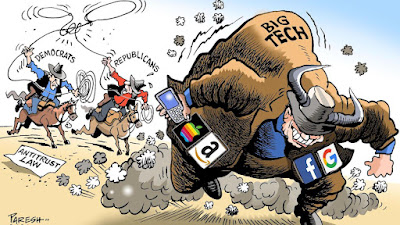With an improving economy, we’re now finding ourselves with more marketing dollars to spend. Yet we’re still emerging from a covid cocoon, and sometimes it’s hard to imagine a future without Covid.
The urge to gather is strong, but look for a hybrid model
We’re hosting events again, but they’re likely to be hybrid models, deploying technology for those who cannot or prefer not to venture out. Events may be smaller and more intimate. Have we seen the last of the massive trade shows?
Supporting a cause should be part of your marketing plan
Consumers, especially millennials, like to support companies with a mission—those who are partnering in some way with nonprofits. This could include doing a promotion and matching the donations, underwriting an event, donating a percentages of a day’s earnings to a cause. There are endless ways to make this work. According to nonprofit coach Mallory Erickson, these types of partnerships can help you reach a wider audience.
Say goodbye to smartphones
Who knew that the pandemic hit the smartphone industry especially hard, with global smartphone shipments declining in 2020 as demand and supply hit the skids. Smartphone sales will have to compete with a new line of smart eyewear and wearables that are entering the market. Apple has developed smartglasses and virtual reality headsets, though they’ve not yet been released. There’s a growing industry of wearables and hearables, like the Apple AirPods.
Remote workforces are here to stay
While Silicon Valley, Silicon Alley and Silicon Forest will still exist, there will be an impact as big tech workers continue working from home as the pandemic winds down. Startups and smaller companies likely will follow suit. The result? A highly skilled tech workforce distributed across the US—no longer relegated to tech centers.
Healthcare is the next battleground for big tech
Tech giants will make further inroads into the healthcare industry, capitalizing on the smart fitness industry. Amazon’s fitness tracking wearable and Google’s acquisition of Fitbit are evidence of this trend. Technology will be forcing the pharmaceutical companies and insurance industry to evolve. This is already happening–major insurers are offering to reimburse us for wearables like the Apple watch.
The “home of things” industry is growing
The rising popularity of smart home devices and home surveillance systems such as Amazon Ring and Google Nest has created a new “home of things,” or HoT, industry. Google, Amazon and Apple will be the players in this space. Who has kids who put back empty cereal boxes and milk cartons? Think about a trash can that can detect the empties and automatically order replacements.
Antitrust action may fail to keep up with big tech’s moves
The Biden administration will be ramping up antitrust enforcement of big tech. But the rapidly changing landscape may be moving too fast for regulators to keep up.
This is the perfect time to start working on your marketing plan for the coming year
Contact Top of Mind Marketing. We’re writers and digital marketing specialists.









